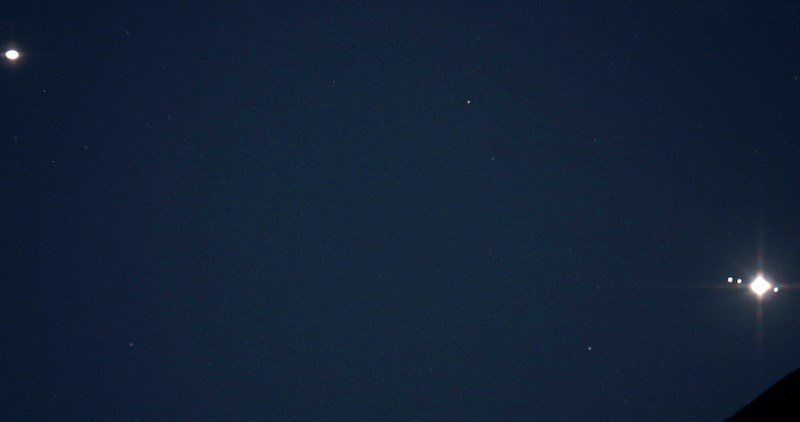
Kristina Bergen  | Special to the 51°µÍø
Whether it was good, bad, or ugly for you, 2020 is on its way out the door.Â
But just before it goes, Rocky Mountain sky-watchers are going to get a beautiful gift – a glimpse of what people on social media are calling the Bethlehem Star lighting up the sky above Jasper Dark Sky Preserve just before Christmas.
At The Jasper Planetarium, we’re getting calls every few days to book our outdoor Telescope Experience to see this star in the skies above the Whistlers this month.
Only problem is, it’s not a star... This much-hyped event is actually an alignment of our solar system’s two giant planets, Jupiter and Saturn.
Officially dubbed the Great Conjunction, Jupiter and Saturn align about once every 20 years.
What makes things different this year is that they’ll appear to be the closest they’ve been to each other in the sky since the year 1226 AD, just after St. Francis of Assisi invented the nativity scene.
And this alignment happens on December 21, the winter solstice and longest night of the year.
Millions of kilometres apart
Speedy Jupiter, the largest of the planets and one of the brightest objects in the night sky, orbits the sun every 12 years.Â
Saturn takes a more leisurely 30 years or so. The Great Conjunction happens when Jupiter catches up to Saturn in orbit and we see them close together in the same line-of-sight.
So by the evening of Dec. 21, the two planets may look like they’re almost touching, creating a spectacular light show. But technically speaking, the largest planets in our solar system will still be hundreds of millions of kilometres apart.Â
The Bethlehem Star theory
The Great Conjunction often happens in December. The closeness of the planets is unusual and doesn’t last very long, which some think makes it a contender for an astronomical explanation of the bright, new star that appeared over Bethlehem more than 2,000 years ago.
A symbol of Christmas that decorates many homes, astronomers and archaeologists have long theorized that the nativity star might have really been an alignment, such as the rare conjunction of Jupiter, Venus and the star Regulus that occurred around the year 2 B.C.
Occurring so close to Christmas, the Great Conjunction has been given the name Christmas Star or Star of Bethlehem.
Where to look, what you’ll see
You don’t need any equipment to witness this yuletide spectacle.Â
If the skies are clear, just find an unobstructed view of the southwest horizon towards the Whistlers by 5 p.m. and you’ll be able to see it all clearly with the naked eye.Â
Even before it’s completely dark, Jupiter is brighter than any star and shines steadily in the southwestern sky. Saturn sits just to the east (left) of Jupiter.
If you start watching the planets now, you’ll get to see them move closer and closer over the next few days until they look like they’re going to touch.
Too much cloud? You’ll still be able to see both these worlds about as close together even a week after Dec. 21.
Look for this Christmas Star if you get the chance this month... The next exceptional show will be 60 years from now, in March 2080!Â
Kristina Bergen is the manager of strategic initiatives with the Jasper Planetarium (still open nightly for outdoor telescope viewing.) She hangs stars of all shapes and sizes all over her Christmas tree.



